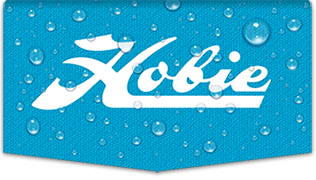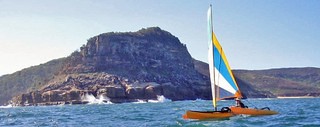chrisj wrote:
Matt, thanks for clarifying the definition of daggerboard and centreboard. Hereafter, I will only refer to it as a centreboard (centerboard in American).
Chris, I tend to think of the AI daggerboard as a variety of bilge board but, because it is not mounted in the center, it is not quite a variant of a centerboard. Yet it wouldn't normally be thought of as a leeboard either,as the leeboard is usually a pivoting board mounted on a gunwale. So over here we would refer to it either as a daggerboard or bilgeboard.
I only mention this in case you're down at the yacht club and want to engage in a technical discussion with some of the "old salts". On the other hand, your meaning is perfectly clear when you say centerboard and I'm not taking any issue with it!
Slaughter wrote:
I'm think'n that the turbo blades would have to give better resistance to sideways slip than the dagger anyway. I just roughly measured the surface areas of both and the 2 tubo blades combined have about 20% more surface area than the daggerboard. So, I'm think'n that if you do have sidways slip, the only advantage of using the dagger over the drive is that it's quicker to install. When sailing with the drive in place I always have the blades vertical, but I'd like know though what has more drag, the drive or the dagger.
IMO, the daggerboard is quite a bit more efficient than the fins. Because it is long and narrow, the DB is said to have a higher aspect ratio, similar to gliders, U-2 spy planes and other high lift wing designs. The higher the aspect ratio, the more efficient the planform. Additionally, the exposed Mirage Drive surface under the boat adds a component of drag that the board isn't saddled with. This adds to its higher surface area (even more drag), not to mention that the surface and cross section of the DB are hydrodynamically cleaner.
Finally, when stationary in the vertical position, the fins are not rigid. They tend to twist somewhat as the boat slips sideways, slipstreaming more toward the tips.
When the fins are active, they are adding a forward component of thrust as well as some lateral resistance. Thus with the same leeway but with a greater speed, the boat has a better tracking angle. At least that's my theory.












